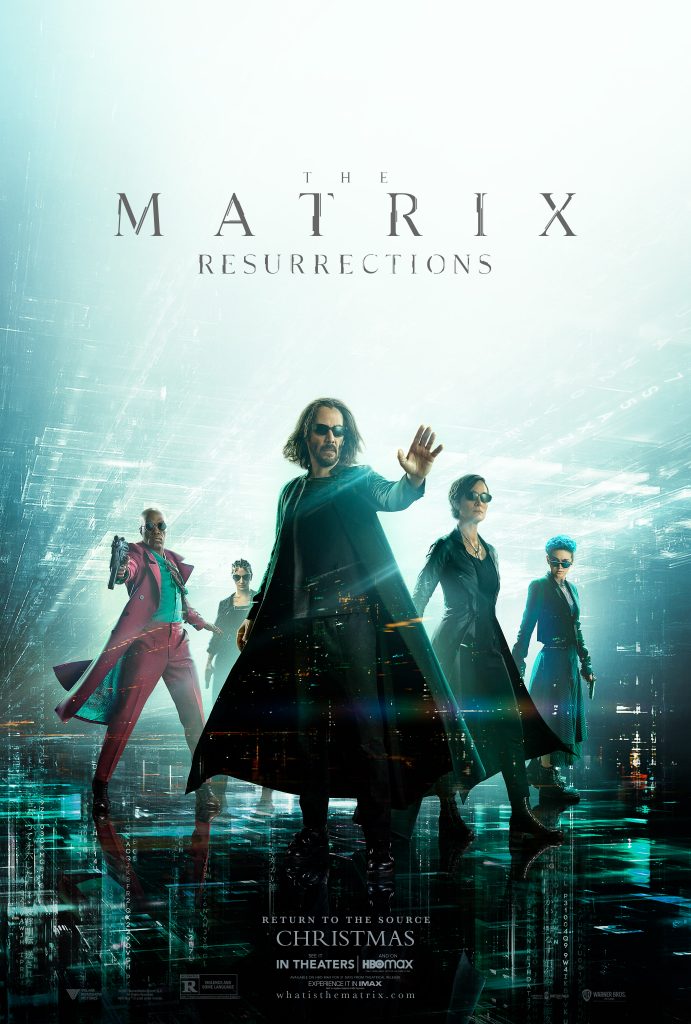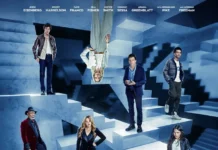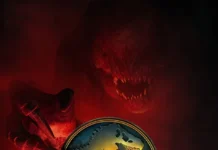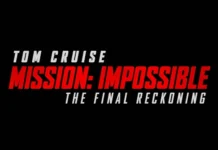 It’s been a minute since the groundbreaking, dazzling film The Matrix and its sequels — Matrix Reloaded and Matrix Revolution — hit the screens. The trilogy ended in 2003 and yes, it was that long ago. Lauded for their innovative special effects and chided for an increasingly confusing storyline, fans nevertheless have remained loyal to the Wachowski creations.
It’s been a minute since the groundbreaking, dazzling film The Matrix and its sequels — Matrix Reloaded and Matrix Revolution — hit the screens. The trilogy ended in 2003 and yes, it was that long ago. Lauded for their innovative special effects and chided for an increasingly confusing storyline, fans nevertheless have remained loyal to the Wachowski creations.
Only Lana Wachowski is involved with the new incarnation, The Matrix: Resurrections. She is the sole director and co-wrote the script. So, how does this one measure up to the previous ones? It’s certainly not equal to the first film, but it’s considerably more dazzling than the last two.
Keanu Reeves and Carrie-Ann Moss reprise their roles as Neo and Trinity and bring their undeniable chemistry to their much older selves. There is a new, younger Morpheus (Yahya Abdul Mateen II), and a new group of freedom fighters, led by Bugs (Jessica Henwick). Jada Pinkett Smith returns as Niobe, now the leader of a peaceful refuge called IOS. All of these actors turn in strong performances.
Jonathan Groff now plays the Smith character, and he’s a more complicated one than the Hugo Weaving version. Weaving was actually approached for the role but couldn’t accept it due to scheduling conflicts. Groff is more than equal to the part and dominates every scene he’s in. Neil Patrick Harris plays The Analyst, Thomas Anderson/Neo’s psychotherapist who may not be who he seems to be. Harris is a charismatic actor who brings strength and humor to his role.
As the film begins, Thomas Anderson lives in the “real” world and works for Smith. He’s legendary for inventing the very popular, interactive video game trilogy The Matrix, Reloaded, and Revolution. Although he’s unaware that he is Neo and the events of his “game” happened, he has started to have glimpses of the other reality beyond everyday life. In particular, he spots a woman in a coffee shop who stimulates a memory of Trinity. When he approaches her, he learns that she is a married woman with 2 children, and her name is Tiffany. Still, he senses that there’s more to the flashes of the past he sees in dreams.
Then he encounters Bugs. She leads him to Morpheus who leads him back out of the matrix. He now knows that he is Neo and has decisions to make, just as he did in his first experience with the matrix and its lethal Machines. He learns that Tiffany is, indeed, Trinity, but like himself, she’s been inserted back into the matrix.
Of course, he chooses to fight, but not without mountains of self-conflict and doubt. The events that follow chronicle the extreme physical battles and confrontations of his journey. There will be loss and redemption, false identities/motives and truth, bewilderment and enlightenment — just like the dual realities of actual life and the simulation of it. Paradoxes abound. How do you explain free will and destiny? Or the dilemma of Neo and Trinity, yin and yang, ever separated but ever joined? You may or may not find answers in this film. Strength and victory, however, come from an unexpected source and lead in an unforeseen direction.
I must say that I developed an annoying earworm during the ubiquitous martial arts displays — Kung Fu Fighting! Indeed, everyone IS Kung Fu fighting in The Matrix Resurrections. Neo even says “I still know Kung Fu”. I know that special effects, stunts, and action are the hallmarks of this franchise, but after a while, it gets repetitive. Also after a stunning beginning, it takes a bit too long before Neo really gets into the thick of the melee. I think consolidation of some of the many scenes of Thomas/Neo thinking would have accelerated the pace of the narrative and really engaged the audience sooner. That said, among the 4 films now in the Matrix universe, I’d rank this one as #2. – Jo Anne Hyde












